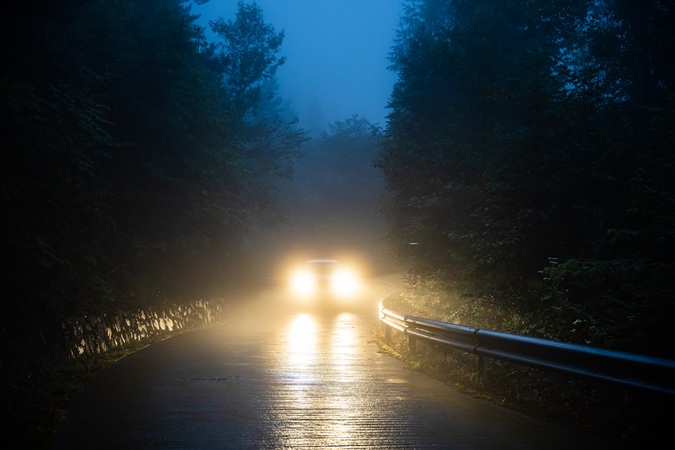Vehicle lighting can cause glare to other drivers. Regulations exist to limit the luminous intensity of headlamps, and their aim, but drivers still report problems with glare, especially when driving at night. Drivers have also reported problems with specific headlamp technologies such as LEDs, and in particular situations such as when facing larger vehicles. In this project, two pieces of work were undertaken to further understand the root causes of glare in night driving on UK roads, and to propose solutions.
First, a survey was undertaken with 1,850 UK drivers matched to the age and gender split of the licence-holding population. These drivers answered questions about their own experiences of glare when driving. Second, an instrumented trial car (left-hand drive) was used to collect data from the usual driver eye position while driving at night. Variables measured included levels of luminance, location, other vehicles in the scene (through number plate recognition), the pitch and roll of the trial car and subjective reports of glare from an observer present in the trial car. Data were analysed using a machine learning algorithm to uncover patterns and establish which variables were associated with high levels of maximum luminance in the scene and reported glare from the observer.
The survey findings indicated that the driving public perceive glare from vehicle headlamps to be an important and widespread issue when driving at night. More than half of drivers reported either having stopped or reduced driving at night (or would if they could) due to headlamp glare.
Analysis of the data from the instrumented car revealed that reported glare was associated with high levels of luminance in the scene, with particular locations and with particular positions (pitch and roll) of the trial vehicle. Specific vehicle types in the scene were also associated with the observer reporting glare, although these findings can only be treated as indicative due to limitations in the vehicle information collected. High levels of luminance in the scene were associated with location and pitch and roll; vehicles in the scene had a much smaller association with luminance than they did with reported glare.
The study demonstrates that glare from vehicle lighting can be studied using an instrumented car, and several considerations for further activities are made. These include public awareness campaigns on glare, further research to understand the problem in more detail and potential changes to regulations.
Accompanying this report is a full literature review.
This set of FAQs explains the findings of the report in plain English.

